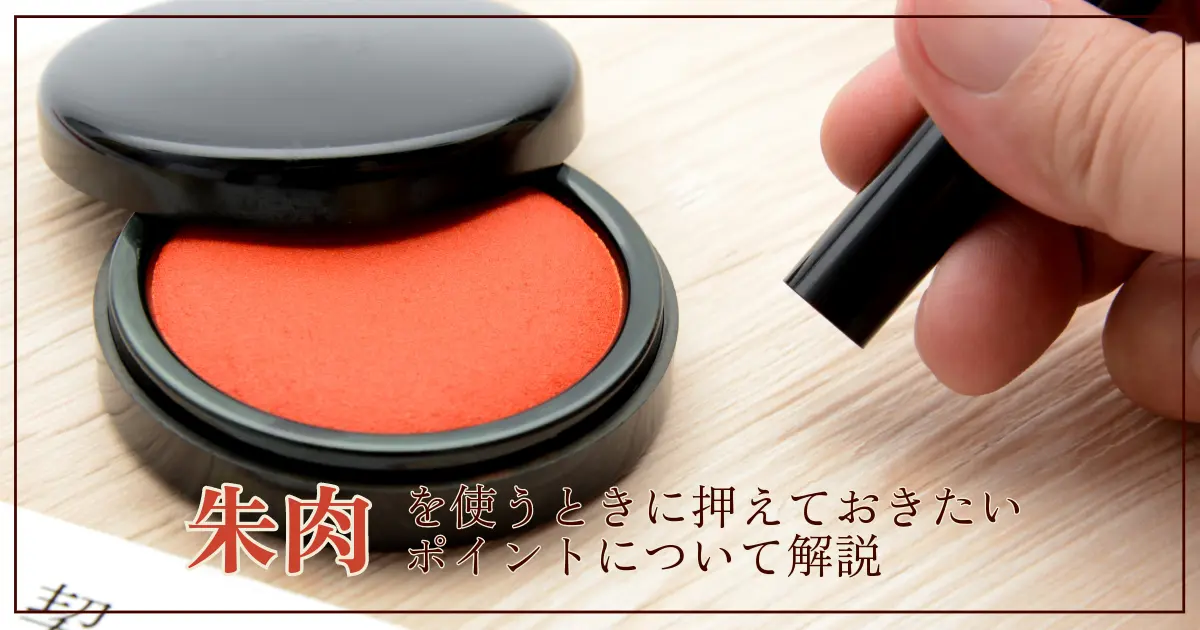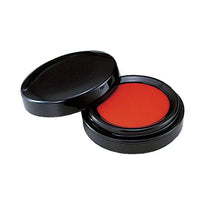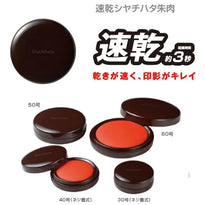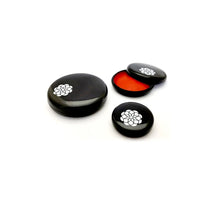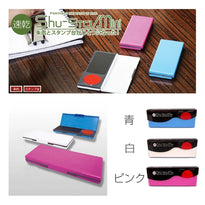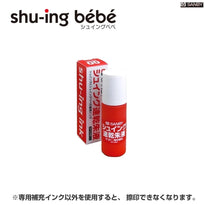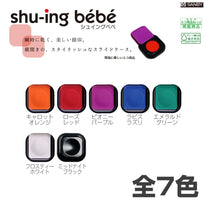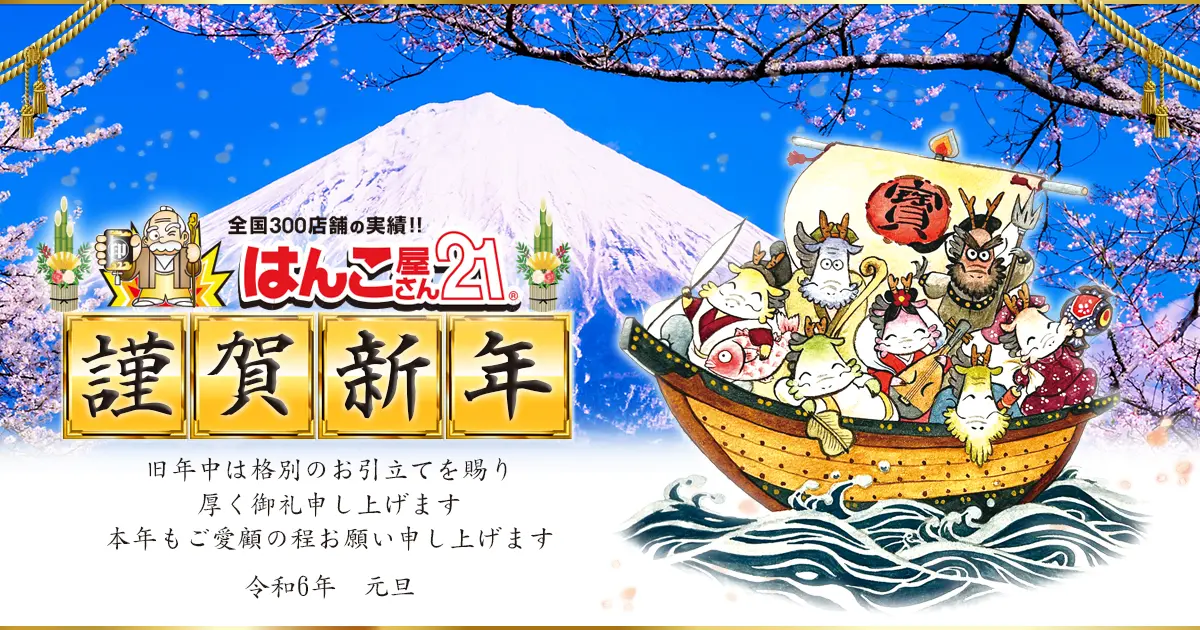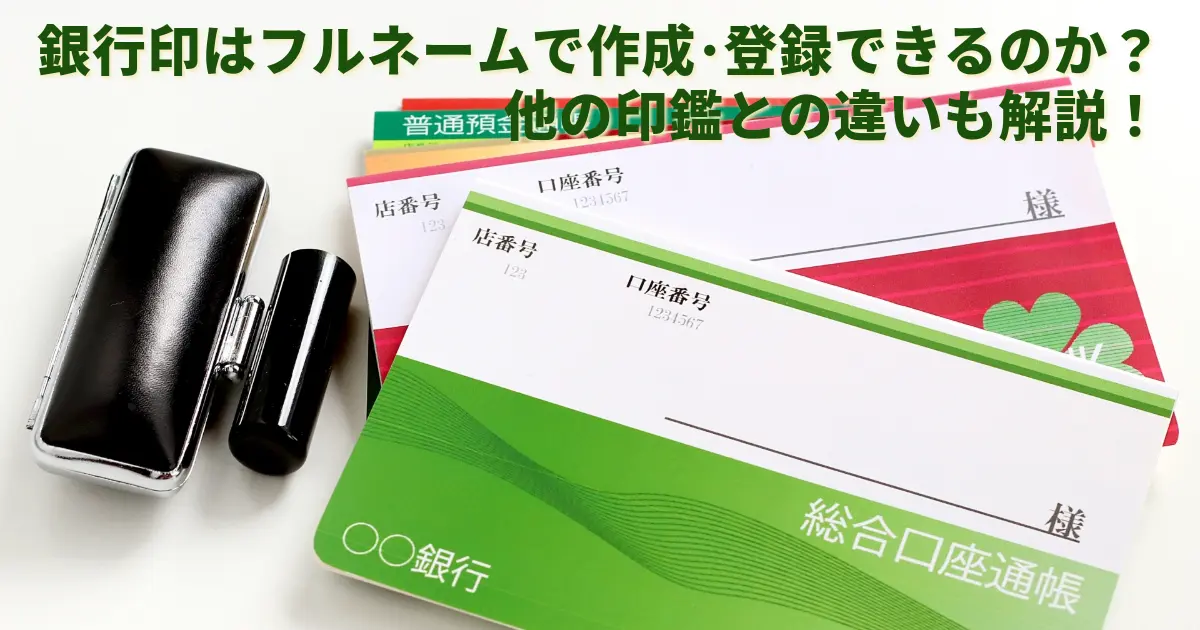Vermilion ink is often used casually when stamping stamps, but some of you may be wondering, ``Why do we use ink for HANKO?'' ``Can't we use it on stamp pads?'' Therefore, in this article, we will explain the reasons for using vermillion ink for HANKO and the points to keep in mind when using it. We will also introduce recommended vermilion meat, so please take a look.
Why use vermilion meat?
It is said that the reason for using vermilion when stamping a HANKO is to leave a correct impression for a long time. Let's take a look at the reasons for using vermilion when stamping a HANKO, and the types of vermilion.
What is vermilion meat?
The vermilion ink used to stamp a HANKO is called vermilion ink, and the ink, which is soaked in ink, and the container are also called vermilion. There are three main types of vermilion: ``sponge type'', ``kneaded type'', and ``indo''.Currently, the mainstream type of vermilion is the sponge type, which is made by soaking a sponge with vermilion. Vermilion stamps are mainly used to stamp important documents such as contracts, and are indispensable in Japan, where stamp culture is widespread.
The reason for using vermilion is to leave a long impression.
It is said that the reason for using vermilion when stamping a HANKO is to preserve the correct impression for a long time. Since ink is made from oil-based pigments, it is resistant to discoloration or fading even when exposed to UV rays or wet with water. If you use HANKO, the impression will not bleed and will remain clear for a long time.
Vermilion meat has a very long history, and has been used in Japan since the Nara period. The impressions of seals affixed in that era are still clearly visible even today, demonstrating how vermilion ink can preserve impressions for a long time. The main reason why important documents are stamped with ink ink today is that the impressions stamped with ink can be preserved for a long time.
Types of vermilion
There are three types of vermilion: sponge type, kneaded type, and ink mud type. The characteristics and usage of ink differ depending on the type. It would be convenient if you could use the sponge type for everyday use and the kneaded type for official documents.
Sponge type
The most popular vermilion ink today is the sponge type, which is made by soaking a sponge in ink. The ink dries faster than the kneaded type or ink paste, and it is practical because you can use it immediately after opening the lid. It is also cost-effective because you can use it repeatedly by HANKO the ink. It is easy to use, as you just tap the seal on the sponge to apply the vermilion ink.
Kneaded type
The so-called kneaded type of vermilion ink is made by dissolving castor oil in a pigment called vermilion, mixing it with Japanese paper, and kneading it together. It has a more profound color than sponge-type vermilion ink, so it is mainly used for official documents and paintings. The advantage of kneaded type vermilion ink is that it is less likely to discolor or fade, but it is difficult to dry, so it may not be suitable for practical use.
The usage is basically the same as the sponge type, but the vermilion may become hard over time. Before using, warm up the vermilion a little and knead it again.
Ink
Indai ink is a type of kneaded vermilion ink that originated in China. It is made from dried mugwort, also known as "moxa," and has the characteristic that the vermilion and oil tend to separate easily. When using it, it is important to knead it well with a spatula and form it into a ball before using. Like the kneaded type, it is often used on official documents.
Difference between ink and stamp pad
Although stamp pads are often confused with vermilion pads, vermilion pads and stamp pads are actually completely different things. While vermilion uses oil-based pigments, stamp pads use water-based ink. It cannot be used as ink because the seal impressions differ in how easily they bleed and how long they last. The stamp pad is mainly used for rubber stamps, and the ink pad is used for HANKO.
Additionally, stamp pads that use water-based ink tend to fade or change color over time, so they are not suitable for use on important documents such as contracts. For documents that need to be stored for a long time, such as contracts, use vermillion ink, which leaves an impression on the document easily.
| Vermilion meat | Stamp pad | |
| Ink properties | oily | aqueous |
| Easy to bleed | Smudging | Easy to bleed |
| ultraviolet light | strong | weak |
| long term storage | suitable for | Not suitable |
| Proper use | HANKO | rubber stamp |
Reasons why you cannot use a stamp pad for HANKO
As mentioned earlier, ink ink and stamp pads have different ink properties. Therefore, please be aware that if you use a stamp pad for HANKO, the HANKO may be damaged due to the solvent contained in the ink.
For example, if you use a stamp pad that contains solvent with a HANKO made of acrylic or resin material, the surface of the stamp may melt. Please be careful with water buffalo HANKO as there is a risk of cracks on the stamp surface. This may not be a problem with all stamp pads, but be sure to use vermillion ink for HANKO.
On the other hand, if you use ink ink for rubber stamps, the oil in the solvent will dissolve the rubber. If you use them incorrectly, you can damage your precious HANKO, so it is important to use them correctly.
Correct way to replenish vermilion meat
For sponge-type vermillion, you can replenish the vermilion using replenishing liquid or vermilion oil. However, depending on the refilling method, the HANKO may not feel good when pressed, so be sure to know the correct refilling method and procedure.
STEP1. Prepare refill ink and necessary tools
The important thing when refilling ink is to use refill ink from the same manufacturer as the ink you are using. Refill ink is sold at various places such as stationery stores and 100 yen shops, but the ingredients actually differ slightly depending on the product. In some cases, there may be quality issues such as discoloration of the vermilion or separation of ingredients, so be sure to have the manufacturers available.
In addition, it is convenient to spread newspapers on the floor when replenishing the vermillion ink so that you can do so without making a mess of the room. Also, be sure to have tissue paper available to wipe off excess ink after refilling.
- newspaper
- Tissue paper
STEP 2. Shake the refill ink thoroughly
Once you have the refill ink ready, make sure the cap is closed and shake it firmly up and down to even out the contents. The components of refill ink may be separated, so if you refill it as is, the color may be uneven.
STEP 2. Penetrate the ink little by little
When you remove the cap of the refill ink, the tip is a nozzle, so press it against the vermilion sponge part and let the ink penetrate. Instead of refilling in one spot, refill the entire sponge in a circular motion. Repeat this process about 5 times to complete ink replenishment.
Please note that it is important to refill the ink slowly and carefully. Refilling the ink all at once may cause failures, so it may be troublesome to refill the ink little by little over several times.
STEP3. Wipe off excess vermilion
Once you have finished refilling the ink, leave it for about 30 minutes to allow the ink to fully penetrate into the ink. Finally, wipe the surface of the sponge with tissue paper to remove excess ink. If you add too much ink to the ink, the ink will become too dark, so don't forget to wipe off the excess ink.
STEP 4. Try pressing and check the density of the vermilion
After replenishing the vermilion, try pressing the HANKO once to check the density of the vermilion. If the ink is too dark, remove the excess ink with tissue paper, and if it is too light, add more ink to adjust.
Recommended vermilion meat
When choosing ink, we recommend choosing one that matches the purpose and occasion for which the HANKO will be used.
Quick-drying vermilion meat (shachihata) with excellent quick-drying properties
When stamping a large number of HANKO, a sponge-type ink pad is convenient because it dries quickly. Some people may have found themselves unable to stack documents on top of each other due to the slow drying of ink, leaving their desks cluttered. If you use quick-drying sponge-type ink, it only takes about 3 seconds to dry and leaves a clear impression. They come in a variety of sizes, so it's convenient to have one on hand and one to carry.
Nikko seal ink mud (Moriyama)
If you want to use it for official documents, calligraphy, paintings, etc., we recommend Nikko's ink mud. High-quality vermilion meat is shiny and has a deep vermilion color. You will need to knead it with a spatula before use, but the impression will be clear and dark, giving it a luxurious feel.
Shusta (Moriyama)
If you use both a HANKO and a rubber stamp, it is very convenient to choose one that has an integrated ink pad and stamp pad. Since it is compact in size, it will not clutter your desk and will be easy to store. It's thin and has a lid, so it's perfect for carrying around.
Shwingbebe (Sanby)
Shwing Bebe is a compact vermilion ink box that comes in a slide case and is easy to carry. It's a sponge-type ink pad that dries quickly, so it will help improve your work efficiency. The case is available in seven colors in total, and is made of vermilion, which is both stylish and convenient.
summary
Although we usually use vermilion meat casually, the key is to use it properly, as the ease of use varies depending on the type. If you don't use ink ink properly, it will affect the quality of the stamp, so choose the one that best suits your purpose. Please use this article as a reference to know how to use vermilion meat and choose the perfect vermilion meat for you.
 日本語
日本語 English
English 简体中文
简体中文 繁體中文
繁體中文 한국어
한국어 ไทย
ไทย Tiếng Việt
Tiếng Việt Indonesia
Indonesia Français
Français Español
Español Português
Português
